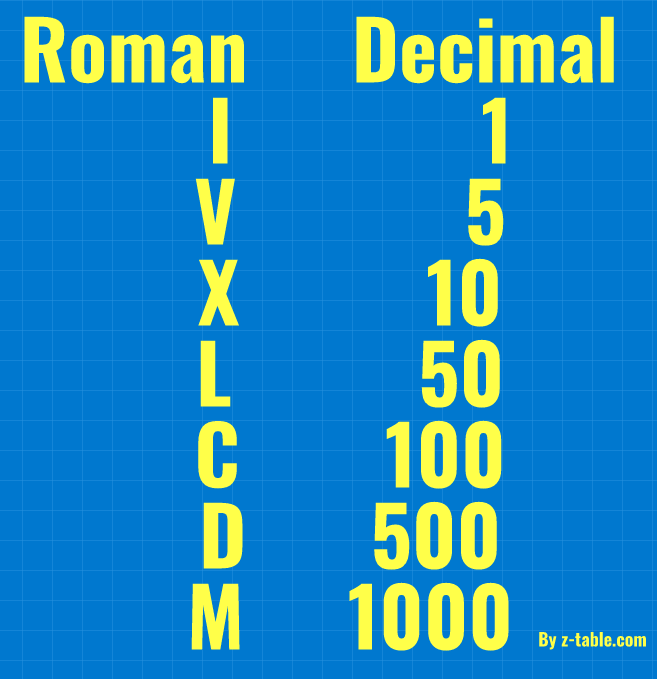6 in Roman Numerals
The Arabic numeral 6 is pivotal in our numbering system as it lies just past the midpoint of the single-digit numbers, between 1 to 5 and 7 to 9. When translated into Roman numerals, 6 is represented by VI, a combination that reflects the additive nature of the Roman numeral system. This article will explore the intricacies of the number 6 and its embodiment as VI in Roman numerals.
Sometimes conversion of Roman Numerals can be a daunting task, especially for larger numbers. You can always use a Roman numerals converter if you need to quickly convert Roman numerals to decimal numbers .
Sometimes conversion of Roman Numerals can be a daunting task, especially for larger numbers. You can always use a Roman numerals converter if you need to quickly convert Roman numerals to decimal numbers .
The Significance of 6
In the Arabic numeral system, 6 follows the pivotal number 5, marking the beginning of the second half of single-digit numbers. Historically, the number 6 has held importance in various cultures, often symbolizing balance and harmony. In Roman numerals, this number is captured by the combination of V and I.
| Roman Numeral | Value |
|---|---|
| I | 1 |
| V | 5 |
| X | 10 |
| L | 50 |
| C | 100 |
| D | 500 |
| M | 1000 |
Representation of 6 as VI
VI is the Roman numeral notation for 6. This represents an additive principle wherein V stands for 5 and I stands for 1. By placing I after V, the Roman system indicates the addition of 1 to 5.
Key Features of Number 6 and VI
- Position in Roman Numerals: VI comes after V (which stands for 5) and before VII (which represents 7).
- Additive Principle: VI exemplifies the additive nature of Roman numerals. I is placed after V, adding 1 to 5 to form 6.
Surrounding Numerals to 6
To understand the context of 6 in Roman numerals, one should consider the numerals immediately preceding and following it:
- V stands for 5.
- VI represents 6.
- VII symbolizes 7.
Insights into the Arabic Numeral 6
- In many cultures, the number 6 is associated with harmony and balance, given its divisibility and positioning among single-digit numbers.
- The Roman numeral representation VI for 6 showcases the system's combination strategy, utilizing two fundamental symbols, V and I.
- Historically, VI is one of the simpler representations, hinting at the importance Romans might have assigned to numbers in the 1-10 range.
Example Scenarios with 6 and VI
- Addition: Merging 6 (VI) with 3 (III) results in 9, rendered as IX in Roman numerals.
- Subtraction: Deducting 1 (I) from 6 (VI) gives 5, which is represented as V in Roman numerals.
Common Queries
How is 6, denoted by the Roman numeral VI, rendered in lowercase?
Answer: It's expressed as vi.
Does the Arabic numeral 6 have alternate representations in Roman numerals aside from VI?
Answer: No, 6 is uniquely represented as VI in Roman numerals.
How is the Roman numeral VI translated into Arabic numerals?
Answer: VI corresponds to the number 6.
How can one effortlessly convert VI into its Arabic numeral equivalent?
Answer: Simply understand that VI represents the addition of V (5) and I (1), totaling 6.
Answer: It's expressed as vi.
Does the Arabic numeral 6 have alternate representations in Roman numerals aside from VI?
Answer: No, 6 is uniquely represented as VI in Roman numerals.
How is the Roman numeral VI translated into Arabic numerals?
Answer: VI corresponds to the number 6.
How can one effortlessly convert VI into its Arabic numeral equivalent?
Answer: Simply understand that VI represents the addition of V (5) and I (1), totaling 6.
The Arabic numeral 6, with its unique positioning and universal symbolism, offers a fascinating lens into numerical systems. Its Roman counterpart, VI, although brief, is packed with historical and mathematical nuances. By delving into the attributes and details of 6 and VI, we gain a richer understanding of these numeral systems and their interconnected evolution.
To learn more about Roman numerals visit our comprehensive Roman numerals guide. For any other math and statistics related resources check out z-table.com.
To learn more about Roman numerals visit our comprehensive Roman numerals guide. For any other math and statistics related resources check out z-table.com.
